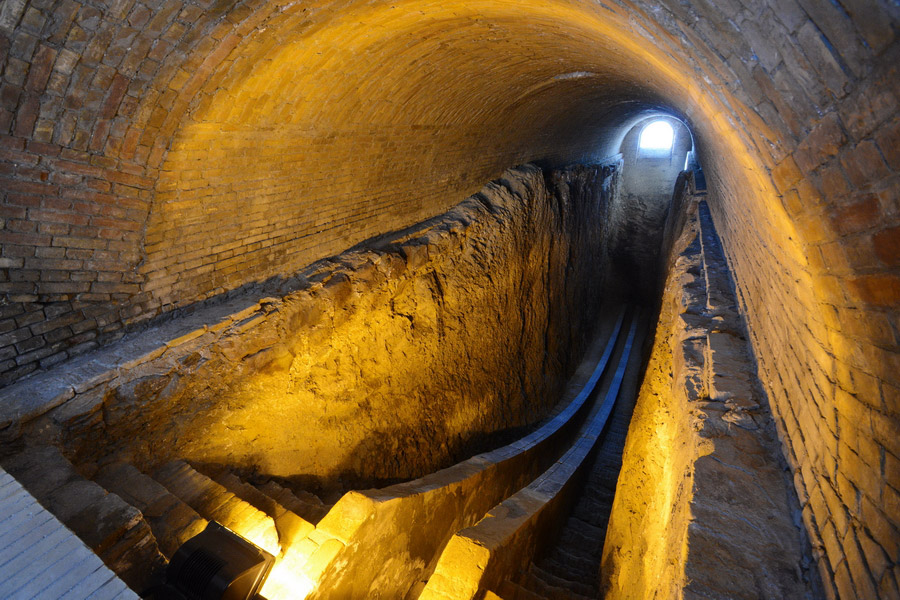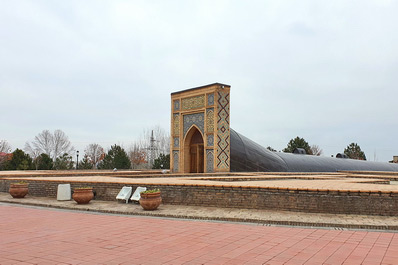Ulugbek Observatory, Samarkand

The Ulugbek Observatory in Samarkand is all that remains of a once-grand scientific complex where the mysteries of the night sky were studied six centuries ago. Founded by Ulugbek, grandson of the legendary conqueror Tamerlane (Amir Timur), the observatory reflects a remarkable era of scientific discovery.
One of the oldest observatories in Central Asia, this site was where scholars precisely calculated the length of the sidereal year. It also produced star maps that remained reference points for centuries and guided travelers on long expeditions.
The observatory’s construction cemented Samarkand’s reputation as a hub of learning, science, and enlightenment during the Timurid Empire.
History
According to legend, Ulugbek visited the ancient observatory in Maragha as a child - a structure built by the renowned Persian scholar Nasir al-Din al-Tusi. Inspired by this early experience, he envisioned creating his own monumental center of knowledge. In 1409, at just 15 years old, Ulugbek ascended to power and soon began working on plans for future astronomical instruments. He was mentored by the distinguished mathematician and astronomer Qazi-zade Rumi.
The observatory was completed in the 1420s as a cylindrical structure surrounded by arcades. Its central feature was a vast sextant, with its upper section extending to the roof. The trench that held this enormous instrument still exists today and can be viewed in a covered passage leading underground. With it, Ulugbek and his collaborators measured the altitude, movement, and positions of celestial bodies throughout the day and year.
Ulugbek also established a vast library here, housing over 15,000 volumes across various fields. Adjacent buildings were constructed for scholars, providing a tranquil environment to explore the mechanics of planetary motion. The complex was adorned with gardens, elegant pavilions, and shaded gazebos, making the observatory one of the most distinguished landmarks of XV century Samarkand.
Following Ulugbek’s death, the observatory remained active for another two decades under the direction of his student, Ali Kushchi. However, when Kushchi relocated to Herat, the center fell into decline. By the late XVI century, the deteriorating building was dismantled, with scattered architectural fragments still found in the old city for years afterward.
Other than the trench that once housed the sextant, virtually nothing survived. For a long time, the observatory's exact location remained a mystery.
It was only in the early XX century that historian and orientalist Vasily Vyatkin uncovered the sextant during excavations. Numerous vivid tiles in shades of blue, yellow, and white were also found, indicating the observatory - like Ulugbek’s madrasah - had once been richly decorated.
What Is There Now?
Today, the Ulugbek Museum stands beside the excavated observatory remains. Two main portals welcome visitors: one leads to the ancient sextant trench, the other to the museum, which showcases a fascinating collection. Inside, you’ll find excavation photos, fragments of old frescoes, models of astronomical tools, and paintings of Ulugbek and Samarkand. The museum also houses the Gurgan Zij book - a star catalogue listing the coordinates of 1,018 stars.
Outside the museum stands a monument to Ulugbek, set against a backdrop of the star-studded sky.
Visiting the Ulugbek Observatory in Samarkand offers a profound insight into the region’s scientific and cultural legacy. This extraordinary site stands as a testament to XV century astronomical brilliance and the high value placed on knowledge in the Timurids era. It continues to inspire admiration for its historical and intellectual significance as a symbol of humanity’s enduring quest to understand the cosmos.



